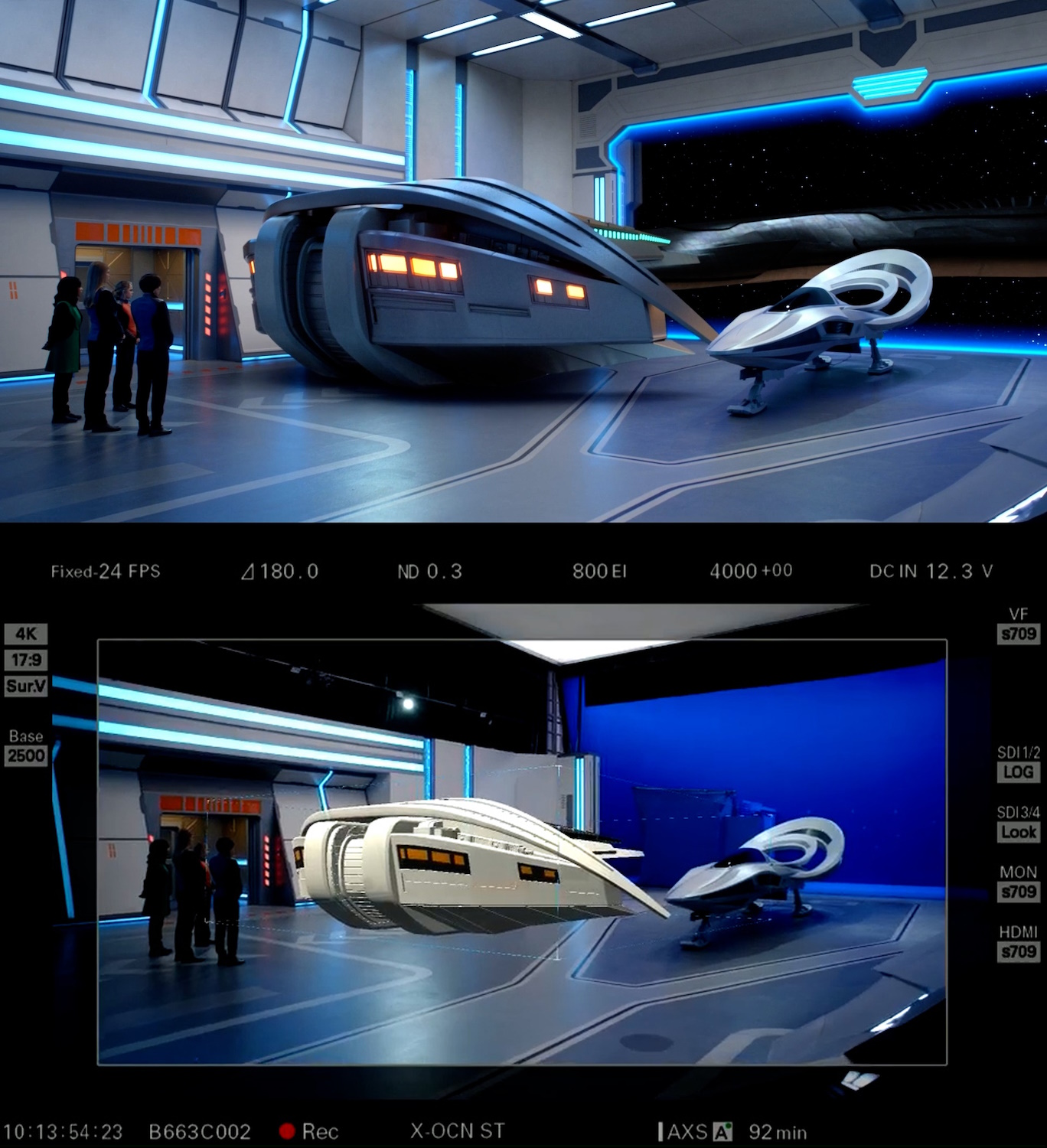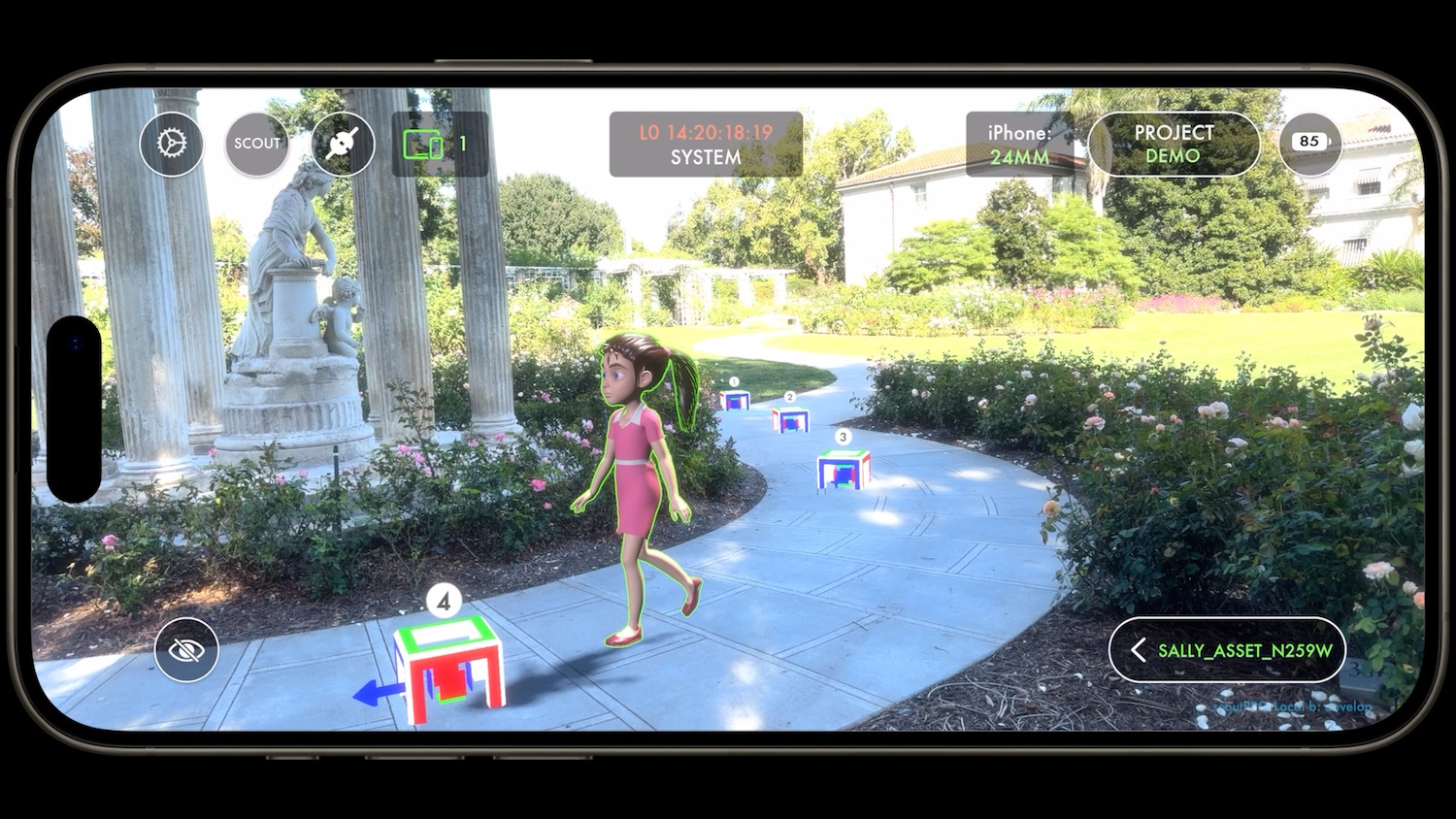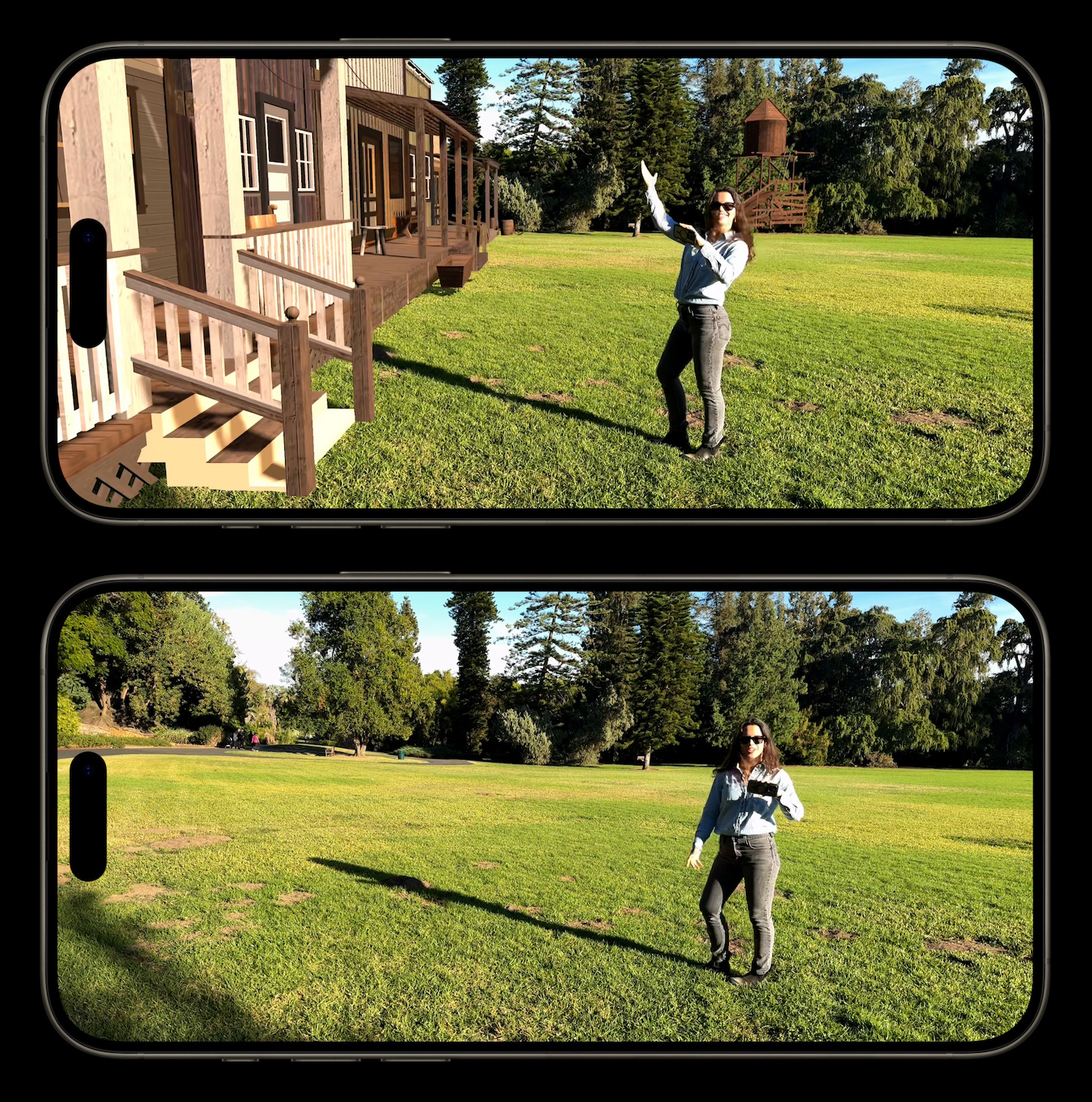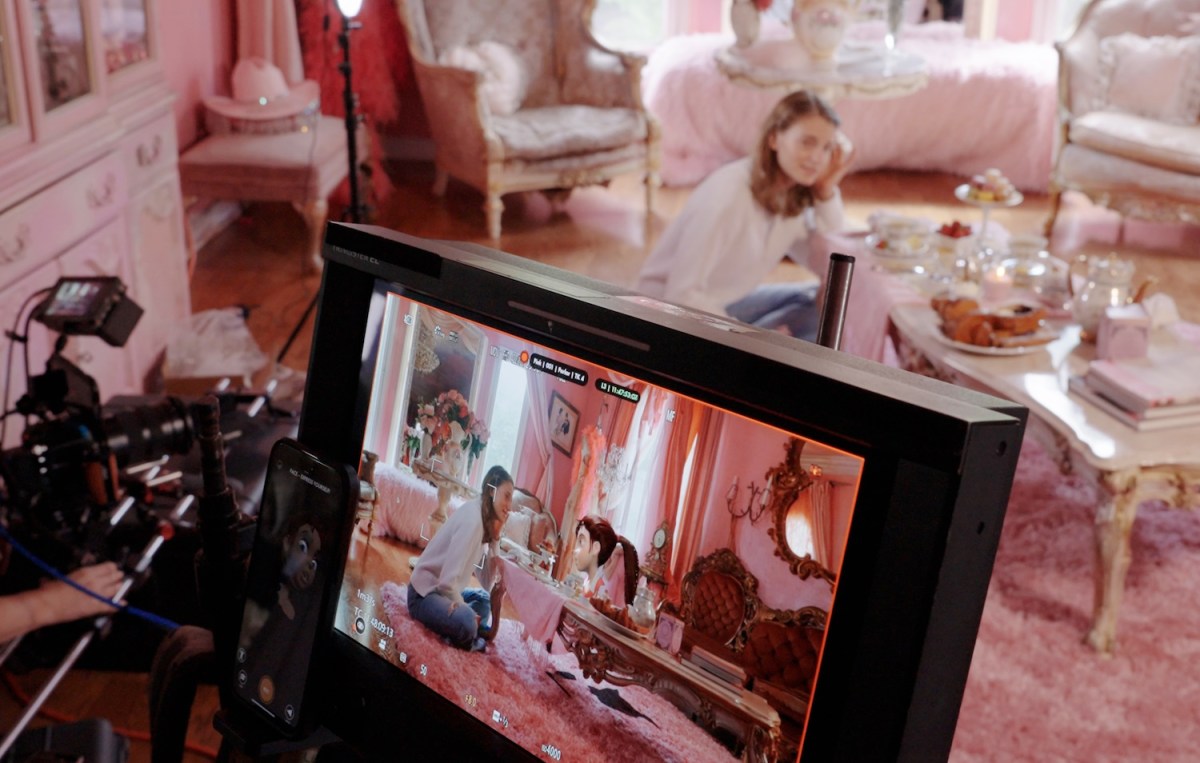Products You May Like
Virtually each TV and movie manufacturing makes use of CG lately, however a present with a totally digital character takes it to a different stage. Seth MacFarlane’s “Ted” is a type of, and his manufacturing firm Fuzzy Door has constructed a collection of on-set augmented reality tools called Viewscreen turning this doubtlessly awkward course of into a possibility for collaboration and improvisation.
Working with a CG character or surroundings is hard for each actors and crew. Think about speaking to an empty place marker whereas somebody does dialogue off-camera, or pretending a tennis ball on a stick is a shuttlecraft coming into the touchdown bay. Till the entire manufacturing takes place in a holodeck, these CG property will stay invisible, however Viewscreen at the least lets everybody work with them in-camera, in actual time.
“It dramatically improves the inventive course of and we’re capable of get the pictures we’d like far more shortly,” MacFarlane advised TechCrunch.
The same old course of for capturing with CG property takes place virtually solely after the cameras are off. You shoot the scene with a stand-in for the character, be it a tennis ball or a mocap-rigged performer, and provides actors and digital camera operators marks and framing for the way you anticipate it to play out. Then you definitely ship your footage to the VFX folks, who return a tough reduce, which then have to be adjusted to style or redone. It’s an iterative, historically executed course of that leaves little room for spontaneity and infrequently makes these shoots tedious and sophisticated.
“Principally, this got here from my want because the VFX supervisor to indicate the invisible factor that everyone’s purported to be interacting with,” mentioned Brandon Fayette, co-founder of Fuzzy Door. “It’s darn onerous to movie issues which have digital parts, as a result of they’re not there. It’s onerous for the director, the digital camera operator has hassle framing, the gaffers, the lighting folks can’t get the lighting to work correctly on the digital ingredient. Think about when you might really see the imaginary issues on the set, on the day.”

Picture Credit: Fuzzy Door
You would possibly say, “I can try this with my iPhone proper now. Ever hear of ARKit?” However though the know-how concerned is analogous — and in reality Viewscreen does use iPhones — the distinction is that one is a toy, the opposite a instrument. Positive, you’ll be able to drop a digital character onto a set in your AR app. However the actual cameras don’t see it; the on-set screens don’t present it; the voice actor doesn’t sync with it; the VFX crew can’t base ultimate pictures on it — and so forth. It’s not a query of placing a digital character in a scene, however doing so whereas integrating with fashionable manufacturing requirements.
Viewscreen Studio wirelessly syncs between a number of cameras (actual ones, like Sony’s Venice line) and may combine a number of streams of knowledge concurrently through a central 3D compositing and positioning field. They name it ProVis, or manufacturing visualization, a center floor between pre and submit.
For a shot in Ted, as an example, two cameras may need the large and shut pictures of the bear, which is being managed by somebody on set with a gamepad or iPhone. His voice and gestures are being completed by MacFarlane reside, whereas a behavioral AI retains the character’s positions and gaze on course. Fayette demonstrated it for me reside on a small scale, positioning and animated a model of Ted subsequent to himself that included reside face seize and free motion.

An instance of Viewscreen Studio in motion, with a reside on-set picture at backside and the ultimate shot up high. Picture Credit: Fuzzy Door
In the meantime, the cameras and laptop are laying down clear footage, clear VFX, and a reside composite each in-viewfinder and on screens everybody can see, all timecoded and prepared for the remainder of the manufacturing course of.
Belongings might be given new directions or attributes reside, like waypoints or lighting. A digital digital camera might be walked by the display screen, letting different pictures and eventualities happen naturally. A path might be proven solely within the viewfinder of a digital camera with motion so the operator can plan their shot.

Instance property in a shot with a digital character – the mannequin of the woman will stroll between the waypoints, which correspond to actual house.
What if the director decides the titular stuffed bear Ted ought to hop off the sofa and stroll round? Or what in the event that they wish to attempt a extra dynamic digital camera motion to focus on an alien panorama in The Orville? That’s simply not one thing that you may do within the pre-baked course of usually used for these things.
After all digital productions on LED enclosures deal with a few of these points, however you run into the identical issues. You get inventive freedom with dynamics backgrounds and lighting, however a lot of a scene really needs to be locked in tightly because of the constraints of how these large units work.
“Simply to do one setup for The Orville of a shuttle touchdown could be about seven takes and would take 15-20 minutes. Now we’re getting them in two takes, and it’s three minutes,” mentioned Fayette. “We discovered ourselves not solely having shorter days, however attempting new issues — we will play a little bit. It helps take the technical out of it and permits the inventive to take over… the technical will all the time be there, however once you let the creatives create, the standard of the pictures will get a lot extra superior and enjoyable. And it makes folks really feel extra just like the characters are actual — we’re not looking at a vacuum.”
It’s not simply theoretical, both — he mentioned they shot Ted this manner, “your entire manufacturing, for about 3,000 pictures.” Conventional VFX artists take over finally for final-quality results, however they’re not being tapped each few hours to render some new variant which may go straight within the trash.
For those who’re within the enterprise, you would possibly wish to know in regards to the 4 particular modules of the Studio product, straight from Fuzzy Door:
- Tracker (iOS): Tracker which streams place knowledge of an asset from an iPhone mounted to a cinematographer’s digital camera and sends it to Compositor.
- Compositor (Home windows/macOS): Compositor is a macOS/WIN app that mixes the video feed from a cinema digital camera and place knowledge from Tracker to composite VFX/CG parts right into a video.
- Exporter (Home windows/macOS): Exporter collects and compiles frames, metadata, and all different knowledge from Compositor to ship the usual digital camera recordsdata on the finish of the day.
- Movement (iOS): Stream an actor’s facial animation and physique actions reside, on set, to a digital character utilizing an iPhone. Movement is totally markerless and suitless – no fancy gear required.
Viewscreen additionally has a cellular app, Scout, for doing the same factor on location. That is nearer to your common AR app however once more consists of the form of metadata and instruments that you simply’d need when you had been planning a location shoot.

Picture Credit: Fuzzy Door
“Once we had been scouting for The Orville, we used ViewScreen Scout to visualise how a spaceship or character would look on location. Our VFX Supervisor would textual content pictures to me and l’d give suggestions instantly. Prior to now, this might have taken weeks,” mentioned MacFarlane.
Bringing in official property and animating them whereas on a scout cuts time and prices like loopy, Fayette mentioned. “The director, photographer, [assistant directors], can all see the identical factor, we will import and alter issues reside. For The Orville we needed to put this creature shifting round within the background, and we might deliver within the animation proper into Scout and be like, ‘OK that’s a little bit too quick, possibly we’d like a crane.’ It permits us to search out solutions to scouting issues in a short time.”
Fuzzy Door is formally making its instruments accessible as we speak, however it has already labored with a number of studios and productions. “The best way we promote them, it’s all customized,” defined Religion Sedline, the corporate’s President. “Each present has completely different wants, so we companion with studios, learn their scripts. Generally they care extra in regards to the set than they do in regards to the characters — but when it’s digital, we will do it.”

sildenafil otc europe
п»їlisinopril
zoloft sexual side effects female
how long after flagyl can i drink alcohol
lotensin and lasix
glucophage weakness
zithromax 250 z-pak tab
can you take cephalexin if you are allergic to penicillin
amoxicillin oral suspension
cat can’t walk after gabapentin
anti anxiety medication escitalopram
ciprofloxacin and ibuprofen
cephalexin 250 mg for dogs
does bactrim make you nauseous
is cephalexin 500 mg a strong antibiotic
lowest dosage of gabapentin for nerve pain
side effect for escitalopram
what does citalopram treat
depakote valproic acid
cozaar help edema feet legs
ddavp melts
depakote pill
citalopram 20 mg pill identifier
cozaar blood pressure medication
where to buy ddavp nasal spray
diclofenac sodium tablet
augmentin rash
ezetimibe degradation
diltiazem er 60 mg
flexeril 10
flomax 0.4 mg mr 30 kapsul
can you drink alcohol with effexor
aripiprazole erectile dysfunction
amitriptyline what is it used for
aspirin ec 81 mg
baclofen overdose symptoms
can i take aspirin with celebrex
generic bupropion
augmentin for uti
ashwagandha acne
what is celecoxib and how does it work
buspirone while nursing
celexa pregnancy
actos aptos
abilify and tardive dyskinesia
buy acarbose
how does robaxin help with opiate withdrawal
antidepressant remeron
repaglinide (prandin)
finasteride vs spironolactone mtf
synthroid seasonique
dosage of sitagliptin
venlafaxine withdrawals
tamsulosin generic capsule color
accc sues voltaren news
tizanidine what is it
300 mg generic version of wellbutrin xl
paxil or prozac or seroquel or risperdal or xanax or zoloft or zyprexa
zetia dose
can zofran and hydrocodone be taken together
zyprexa side effect
levitra coupon 2015
tadalafil (generic cialis)
levitra cheapest online
free trial cialis
levitra generic cheap